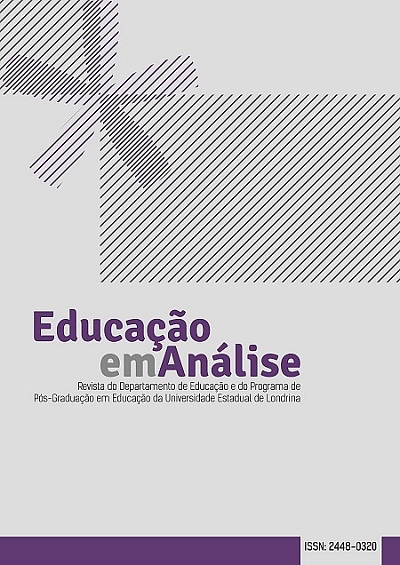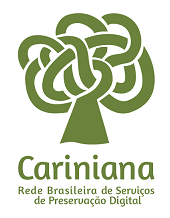A picture is worth 1,000 words: depicting web page menu entries using images for people with learning disabilities
DOI:
https://doi.org/10.5433/1984-7939.2017v2n2p271Keywords:
Pictorial representation, Web site design, Learning disabilities.Abstract
The use of images, symbols and other pictorial representation in websites is both common practice and urged in the literature on web design, particularly with regard to people with learning disabilities. However, there is a paucity of literature on the efficacy of using images in this way, and on what might be the most effective pictorial representation of various topics related to ‘transition’ – the change from the protective environment of school to the adult world of supported employment and more independent living. The aim of the study was to determine which were the most effective depictions of transition-related topics – such as leisure, health and education - with regard to three types of photographic and artistic representation – photos, icons and Widgits. The study was undertaken in two stages. A qualitative stage explored the meanings given to various photos and icons, selected from appropriate websites and literature. Stage two consisted of an online exercise, in which participants are presented with various photos or other representations and select which category the belong to (health, work etc.) Results suggested that, whilst intuitively sensible, the use of pictorial representation may not actually aid understanding of content, because of the difficulties inherent in attempting to encapsulate concepts within a single representation. More concrete topics such as Friends, are easier to represent pictorially than concepts such as Support or Safety. The most effective representations were photographic, with Widgits being the least effective. A strong case could be made from these results for audio rendition of labels.Downloads
References
BOHMAN, P. Cognitive disabilities part 2: conceptualizing design considerations. WebAIM. Logan, 9 Aug. 2013b. Disponível em: https://webaim.org/articles/cognitive/conceptualize/. Acesso em: 18 dez. 2017.
BOOTH, Tim; BOOTH, Wendy. Sounds of silence: narrative research with inarticulate subjects. Disability and Society, Abingdon, v. 11, n. 1, p. 55-69, 1996.
BOOTH, Tim; BOOTH, Wendy. The use of depth interviewing with vulnerable subjects: lessons from a research study of parents with learning difficulties. Social Science and Medicine, Oxford, v. 39, n. 3, p. 415-424, Aug. 1994.
CARR, Deborah; FELCE, David. Application of stimulus equivalence to language intervention for individuals with severe linguistic disabilities. Journal of Intellectual and Developmental Disability, Abingdon, v. 25, n. 3, p. 181-205, 2000.
CHANDLER, Daniel. Semiotics: the basics. 3rd ed. Abingdon: Routledge, 2017.
FILLIPPATOU, Diamanto; PUMFREY, Peter David. Pictures, titles, reading accuracy and reading comprehension: a research review (1973–95). Educational Research, Abingdon, v. 38, n. 3, p. 259-291, 1996.
FINLAY, William Michael Logan; WALTON, Christopher; ANTAKI, Charles. Promoting choice and control in residential services for people with learning disabilities. Disability and Society, Abingdon, v. 23, n. 4, p. 349-360, 2 June 2008.
HARBER, Jean R. The effects of illustrations on the reading performance of learning disabled and normal children. Learning Disability Quarterly, New York, v. 6, n. 1, p. 55- 60, 1983.
HANNUS, Matti; HYÖNÄ, Jukka. Utilization of illustrations during learning of science textbook passages among low- and high-ability children. Contemporary Educational Psychology, New York, v. 24, n. 2, p. 95-123, Apr. 1999.
HOUTS, Peter S.; DOAK, Cecilia C.; DOAK, Leonard G.; LOSCALZO, Matthew J. The role of pictures in improving health communication: a review of research on attention, comprehension, recall, and adherence. Patient Education and Counseling, Limerick, v. 61, n. 2, p. 173-190, May 2006.
HUDSON, Roger; WEAKLEY, Russ; FIRMINGER, Peter. An accessibility frontier: cognitive disabilities and learning difficulties. Web Usability. Marrickville, 30 Jan. 2004. Disponível em: http://usability.com.au/2004/12/an-accessibility-frontiercognitive-disabilities-and-learning-difficulties-2004/. Acesso em: 18 dez. 2017.
JONES, Fergal W.; LONG, K.; FINLAY, William Michael Logan. Symbols can improve the reading comprehension of adults with learning disabilities. Journal of Intellectual Disability Research, Oxford, v. 51, n. 7, p. 545-550, July 2007.
MICHIELUTTE, Robert; BAHNSON Judy; DIGMAN, Mark B.; SCHROEDER, E. The use of illustrations and narrative text style to improve readability of a health education brochure. Journal of Cancer Education, New York, v. 7, n. 3, p. 251-260, 1992.
MINNION, Andrew; STAPLES, P.; SINGH, R.; WILLIAMS, P. Beyond the road ahead. London: University of East London, 2008.
MOLL, John Michael Henderson. Doctor-patient communication in rheumatology: studies of visual and verbal perception using educational booklets and other graphic material. Annals of Rhuematic Disease, London, v. 45, n. 3, p. 198-209, Mar. 1986.
MORRIS, Jenny. Social exclusion and young disabled people with high levels of support needs. Critical Social Policy, London, v. 21, n. 2, p. 161-183, 1 May 2001.
MORRIS, Jenny. Young disabled people moving into adulthood. York: Joseph Rowntree Foundation, 2002.
PEARSON, Elaine; KOPPI, Tony. Developing inclusive practices: evaluation of a staff development course in accessibility. Australian Journal of Educational Technology, Carlingford, v. 19, n. 3, p. 275-292, 2003.
PONCELAS, Angela; MURPHY, Glynis. Accessible information for people with intellectual disabilities: do symbols really help? Journal of Applied Research in Intellectual Disabilities, Hoboken, v. 20, n. 5, p. 466-447, 14 Mar. 2007.
READANCE, John E.; MOORE, David W. A meta-analytic review of the effect of adjunct pictures on reading comprehension. Psychology in the Schools, Oxford, v. 18, n. 2, p. 218-224, Apr. 1981.
SEVILLA, Javier; HERRERA, Gerardo; MARTINEZ, Bibiana; ALCANTUD, Francisco. Web accessibility for individuals with cognitive deficits: a comparative study between an existing commercial web and its cognitively accessible equivalent. ACM Transactions on Computer-Human Interaction, New York, v. 14, n. 3, p. 1-23, Jan. 2007.
SIDMAN, Murray. Equivalence relations: where do they come from? In: BLACKMAN, Derek E.; LEJEUNE, Helga (Ed.). Behavior analysis in theory and practice: contributions and controversies. Hillsdale: Erlbaum, 1990. p. 93-114.
SINGH, Saamer; GEDEON, Tamàs Domonkos; RHO, Youngju. Enhancing comprehension of web information for users with special linguistic needs. Journal of Communication, Oxford, v. 48, n. 2, p. 86-108, June 1998.
TARLETON, Beth. The road ahead? Information for young people with learning difficulties, their families and supporters at transition. Bristol: University of Bristol, 2004.
TOWNSLEY, Ruth. The road ahead? What does the literature tell us about the information needs of young people with learning difficulties and their families at transition? Bristol: University of Bristol, 2004.
W3C - World Wide Web Consortium. 15 May 2017. How People with Disabilities Use the Web. Disponível em: https://www.w3.org/WAI/people-use-web/. Acesso em: 18 dez. 2017.
WARD, Linda; HESLOP, Pauline; MALLETT, Robina; SIMONS, Ken. Transition: the experiences of young people with learning disabilities and their families in England. Tizard Learning Disability Review, Bingley, v. 8, n. 4, p. 19-28, Oct. 2003.
WIDGIT. About Widgit. Disponível em: http://www.widgit.com/aboutus.htm. Acesso em: 18 dez. 2017.
WILLIAMS, Peter. Transition and people with learning disabilities: reflections on the quality of content that emerges from the process of involving service-users in information provision. Aslib Proceedings, Bingley, v. 60, n. 5, p. 474-492, 2008.
Downloads
Published
How to Cite
Issue
Section
License
The journal reserves the right to make normative, orthographic and grammatical changes in the originals, with the aim of maintaining the cultured standard of the language and the credibility of the vehicle. It will, however, respect the authors' writing style. Alterations, corrections, or suggestions of a conceptual nature will be sent to the authors when necessary. In these cases, the articles, after being adequate, should be submitted to a new appreciation.









